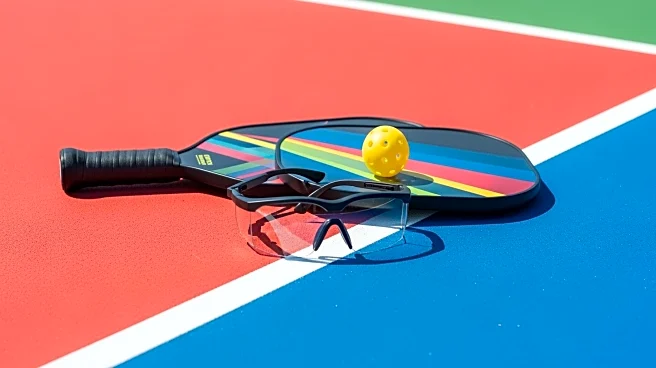What's Happening?
A recent study published in JAMA Ophthalmology highlights a significant increase in eye injuries related to pickleball, a sport that has rapidly gained popularity in the United States. The study, conducted by three eye doctors, utilized data from the National
Electronic Injury Surveillance System (NEISS), which collects information from a sample of U.S. hospitals with emergency departments. Between 2005 and 2024, the study identified 2,472 pickleball-related injuries, including 73 eye injuries. Notably, 88% of these eye injuries occurred between 2022 and 2024, with a marked increase of approximately 405 cases per year from 2021 to 2024. The majority of injuries were reported in players aged 50 and older, suggesting that older individuals may be more susceptible due to factors like muscle mass and bone density changes. Common causes of injury included being hit by the ball, falling, or being struck by a paddle, with periocular lacerations being the most frequent type of injury.
Why It's Important?
The rise in pickleball-related eye injuries underscores the need for increased awareness and potential safety measures as the sport continues to attract a growing number of participants. With an estimated 19.8 million people playing pickleball in 2024, the sport's popularity has surged by 311% since 2020. The study suggests that casual players, who may lack experience and physical fitness, are more prone to injuries. This trend highlights the importance of implementing protective measures, such as wearing eye protection, to prevent serious injuries like retinal detachment and orbital fractures. The American Academy of Ophthalmology recommends protective eye gear, but no official guidelines exist, indicating a gap in safety protocols that could mitigate injury risks.
What's Next?
The study calls for the establishment of standardized recommendations for eye protection in pickleball to reduce injury rates and prevent vision loss. As the sport continues to grow, pickleball organizations may need to consider promoting safety measures and educating players about age-specific risk factors. Further research is necessary to confirm the susceptibility of casual players to injuries and to develop comprehensive safety guidelines. The findings may prompt discussions among stakeholders, including sports organizations and healthcare professionals, to address the rising injury rates and enhance player safety.
Beyond the Headlines
The increase in pickleball-related injuries may reflect broader trends in recreational sports participation, where casual players engage in activities without adequate preparation or protective measures. This phenomenon raises questions about the role of sports organizations in ensuring player safety and the potential need for regulatory oversight. The study's findings could influence future policy decisions regarding safety standards in recreational sports, emphasizing the importance of balancing accessibility with safety.
















